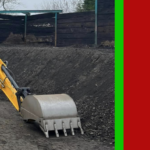Course Aim
Upon completion of this course, learners will be able to:
Identify the main types of abrasive wheels and their equipment, and will understand the hazards and risks associated with them.
Understand the legal requirements placed on manufacturers, employers and employees for the safe use of abrasive wheels.
Know how to carry out a risk assessment for the safe use of abrasive wheels.
Be aware of the control measures needed to reduce or eliminate the risks associated with abrasive wheels, including harmful dusts, vibration, noise, fire and electrical risks.
Understand how to safely handle, store, mount, use, dress and inspect the main types of abrasive wheels.
Course Objectives
To ensure the health and wellbeing of yourself and those who may be present, you must understand where you may encounter asbestos. It is also important that you know what to do if you disturb asbestos. This is a possibility for many occupations, such as for construction workers or landlords.
Course Summary
Introduction to Abrasive Wheels
Types of abrasive wheels, dangers of abrasive wheels, abrasive wheels and the law, manufacturers responsibilities, employer responsibilities, employee responsibilities, HSE guidance.
Risk Assessment
What is a risk assessment?, who should carry out a risk assessment?, Step One: Identifying hazards, Step Two: Decide who might be harmed and how, Step Three: Evaluate the risks, Step Four: Record the findings, and Step Five: Review and update.
Safe Practices for Abrasive Wheels
The hierarchy of control, wheel speed, wheel handling and storage, wheel mounting, mechanical guards and work rests, safe working practices, inspections and checks and safely dressing abrasive wheels.
Further Abrasive Wheel Hazards and Controls
Prevention of eye and face injuries, harmful dusts, PPE markings, vibration control, noise reduction and control, fire risks, electrical safety, hand-held grinding and cutting-off tools, training, communication and monitoring, Reporting of Injuries, Diseases and Dangerous Occurrences Regulations 2013 (RIDDOR), first aid and emergency procedures.
Duration
You’ll be in the classroom for 1/2 days, and on these days you will be in a small group with fellow blended coursemates. The day will be led by a specialist trainer.1
Testing / Certification
On completion of the course learners receive an Certificate valid for 3 years, and meets HSE requirements.
Location
Croydon












